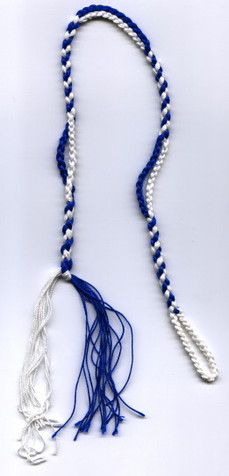
Personally I would have taken a different approach. I would have wanted a more memorable experience. Maybe a secret potion or some holy water to pour on my head for seven days would be more impressive. If I was going to be healed, I’d want a little more showmanship than the fringe of a Rabbi's prayer shawl.
One particular woman thought the edge of Jesus’ prayer shawl could stop a 12-year hemorrhage. It was a bold (somewhat difficult to understand) belief. She didn’t want him to touch her head, to say a prayer, or to make a magical elixir. She just wanted to grab a corner of his outer garment.
At first glance, this lady seems to have an ill-conceived belief in the power of prayer shawls. I personally think they are a fashion nightmare and have never found one with the redeeming value of healing power. But Matthew 9:20-22 records her exceptional story.
A woman who had been suffering from a hemorrhage for twelve years, came up behind Jesus and touched the tassels of his shawl. In her head she was thinking, “If I only touch his garment, I will get well.” Jesus turned around to look at her and said, “Daughter, be encouraged; your faith has made you well.” At once the woman was made well.

From our modern perspective, the story looks like the bold move of a fanatic who sees her favorite Hollywood star. It’s like a crowd full of young girls who all want to rip a piece of clothing off of Justin Bieber as he passes by. In the mental scenario I imagine, this woman is like the one teenager who is able to jump across the security line and grab the corner of Justin’s hipster coat. She gets an instant adrenaline rush and all her ills are healed. At least that’s what I imagine. But the analogy breaks down with the idea that girls believe Justin Bieber’s clothes could end their battle with sickle cell anemia or hyperthyroidism.
Jesus does not mistake this woman’s desperate grasp for an awestruck female fan. He takes her very seriously. He looks at her passionate pursuit of the tassels on his prayer shawl as a definitive act of faith. How can that be? It doesn’t make plain sense. To figure out what is really happening, we need to start with a simpler question. Why was Jesus even wearing tassels on the edge of his prayer shawl in the first place?
Interpreting the Tassels
Tassels happen to be a central element to a divine command in the Torah. In Numbers 15:38-39a the Lord tells Moses that Jewish men needed to wear tassels as a reminder.
Speak to the sons of Israel, and tell them that they shall make for themselves tassels on the corners of their garments throughout their generations, and that they shall put on the tassel of each corner a cord of blue. It shall be a tassel for you to look at and remember all the commandments of the Lord.

Rabbis in Jesus’ day had developed a number of common methods for interpreting the Hebrew Scriptures. Many of the interpretive techniques are denounced in Christian Seminary “Hermeneutics” classes today (the ones I teach included), but they were popular in the first century.
One of the interpretive techniques is called Gezerah Shawah. Don’t worry if you can’t pronounce it. Gezerah Shawah is similar to what we call “cross-referencing” today. An interpreter finds a word or phrase in one verse and then traces it to other verses where it occurs. The goal is to find additional insight on a particular topic or to explain the meaning of one verse through the ideas found in another verse with similar language.
When Rabbis applied the Gezerah Shawah technique to Numbers 15:38, it led them to Malachi 4:2. The connection came from the common word “corners”--kanaph in Hebrew. In Numbers 15:38 kanaph refers to the corners of the garments where Israelite men were supposed to attach tassels. In Malachi 4:2 it is difficult at first to find the word in the English translation. Try and pick it out from the following quote: “For you who fear My name, the sun of righteousness will rise with healing in its wings.”
Although you may not be able to make the connection, ancient rabbis had discovered a prophetic marker of the coming Messiah. The rabbinic connection explains exactly why Jesus interpreted a woman's desperate grasp for his prayer shawl as deep and discerning faith. For the rest of the story, download the free sample chapter of Reenacting the Way (of Jesus) for Kindle and let it blow you away.






 RSS Feed
RSS Feed
